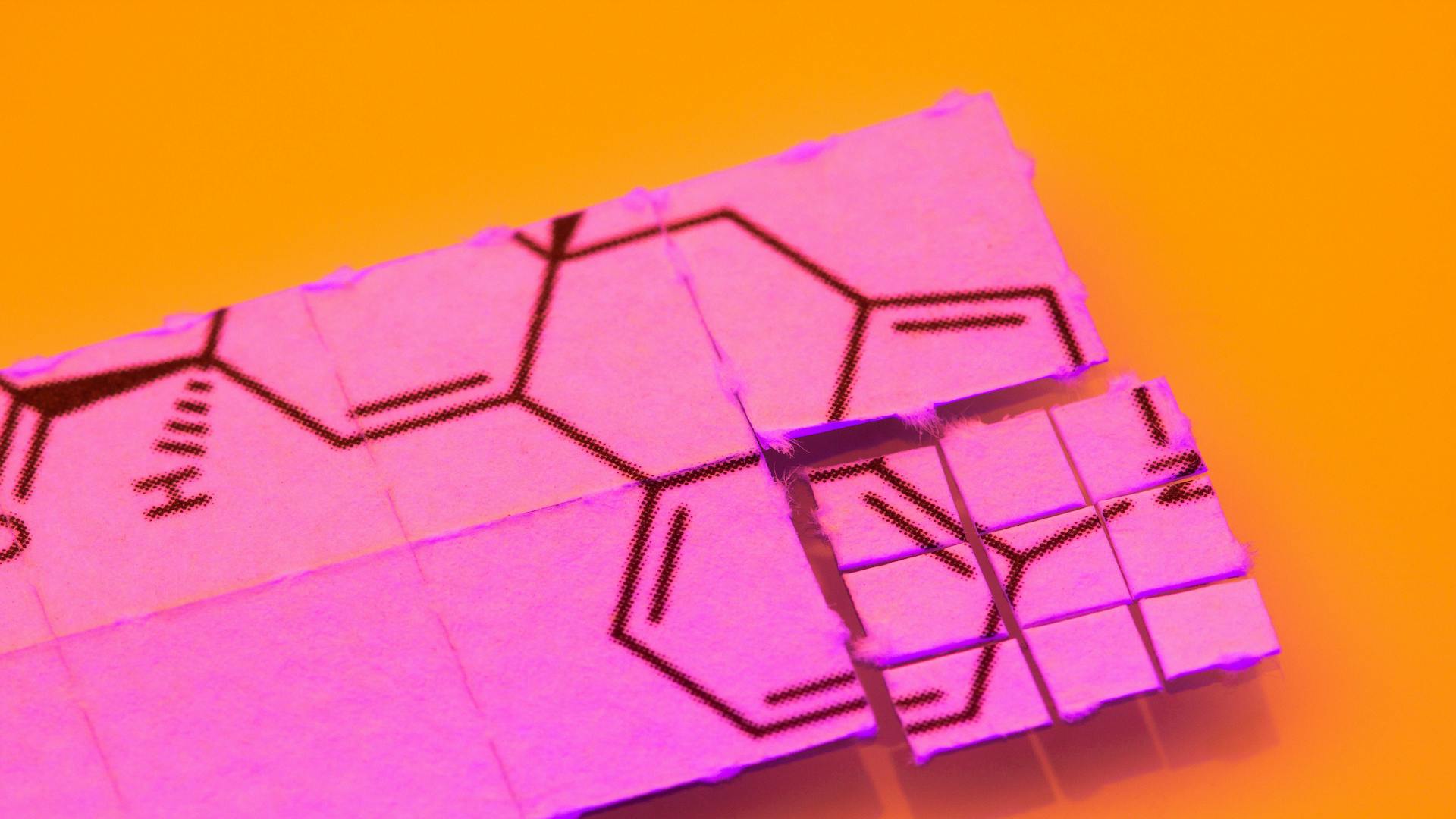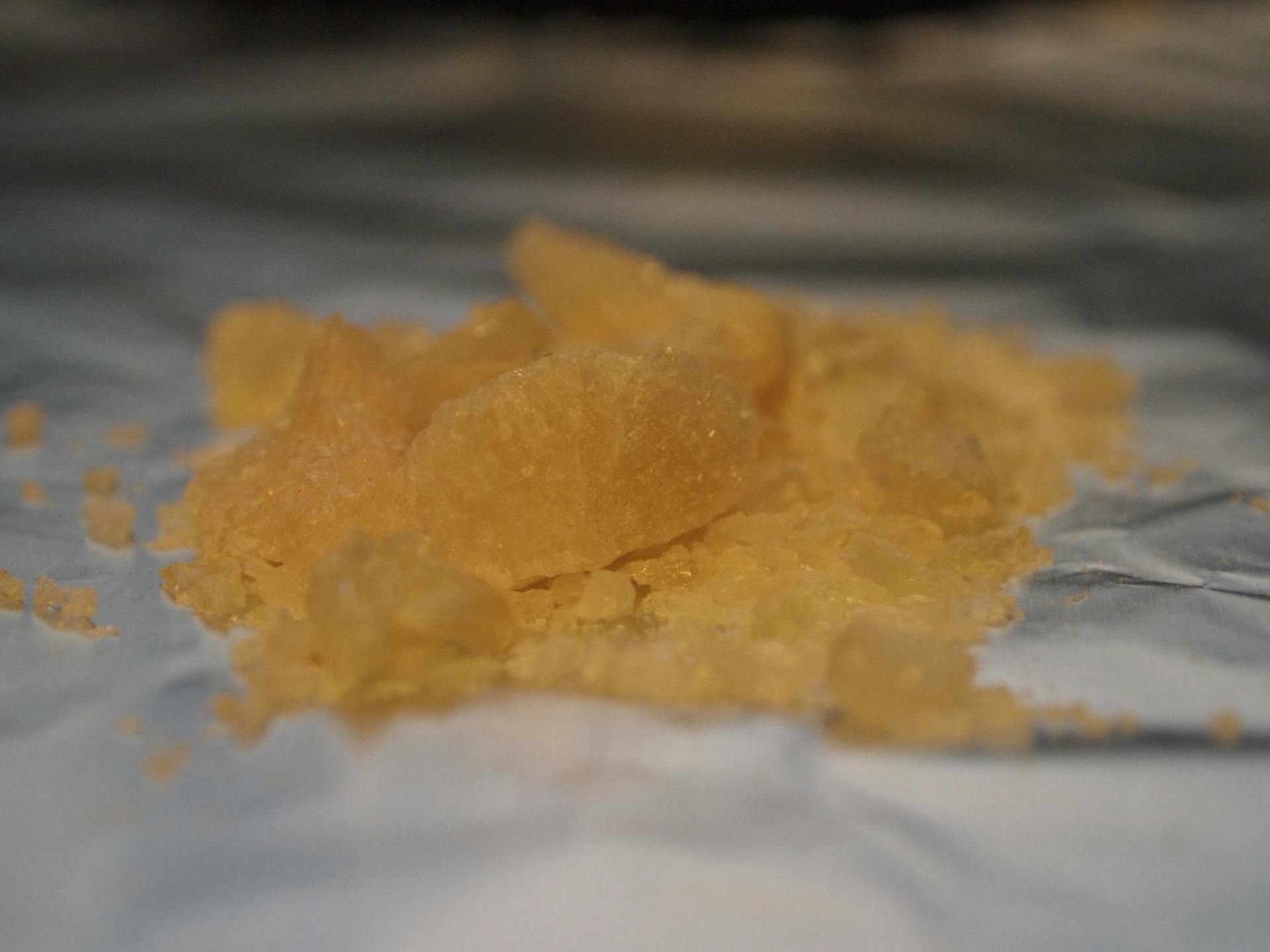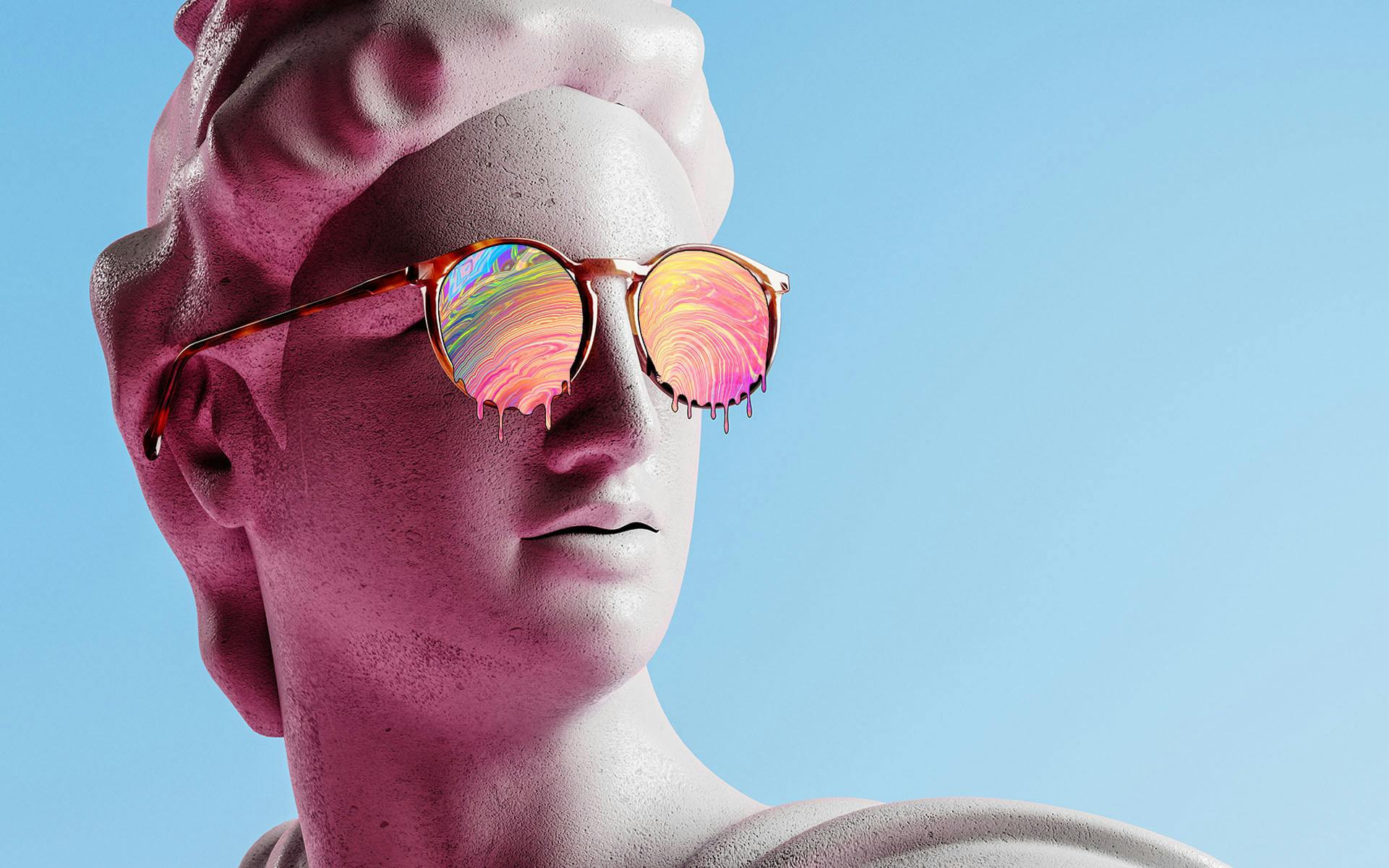Written by Emma Stone
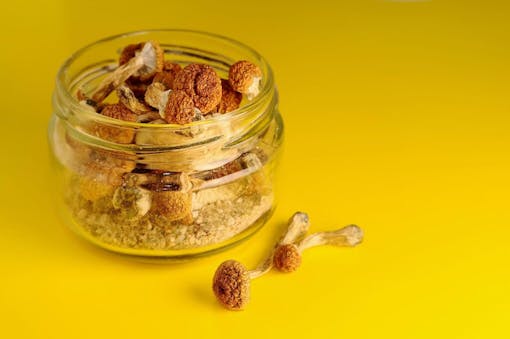
In lush meadows and decaying tree stumps across the world, slender, light brown mushrooms charged with psychedelic powers arise. The fantastic properties of these mushrooms have been revered by humans throughout the ages, with evidence of their use dating back into prehistory.
Magic mushrooms, and the psychoactive compound in them, psilocybin, activate specific serotonin receptors in the brain, causing changes in mood, thoughts, feeling, or behavior. Incredibly, there are more than 100 varieties of psychedelic mushrooms growing wild on every continent except Antarctica.
Shrooms have left a lasting imprint on human history and culture. They’re thought to have been an evolutionary catalyst that may have expedited human development. Psychedelic mushroom expert Terence McKenna once asserted, “Homo sapiens ate [their] way to higher consciousness.”
These fungi have opened the door for many to step into the world of psychedelics, and magic mushroom imagery permeates popular culture—some argue that the story of Alice in Wonderland can be read as a metaphor for a perception-altering mushroom trip.
What’s so unique about the psilocybin molecule found in magic mushrooms? What does our lengthy relationship with shrooms reveal about our origins? And what trips might mushrooms take us on in the future?
What are magic mushrooms?
The magic of magic mushrooms comes from the psilocybin that lies within them. “Psilocybin is a molecule… produced by over 100 mushroom species, likely to fend off various insects and/or microorganisms,” explained Marshall Tyler, Director of Research at Field Trip Health. “When these mushrooms are consumed by humans, the liver converts psilocybin into the psychoactive molecule psilocin.”
There are different varieties of psychedelic mushrooms scattered across the globe. Psilocybe cubensis, also affectionately referred to as the “Golden Teacher,” is the most common. Other popular magic mushrooms include “Liberty caps” (Psilocybe semilanceata), “Wavy caps” (Psilocybe cyanescens), and “Flying Saucers” (Psilocybe azurescens). Most psilocybin mushrooms tend to have light-brown to gold-colored caps with slender stems.
Shroom hunters can pick out magic mushrooms by their trademark feature of blue bruising: Stems turn a blue shade when picked, a giveaway that psychoactive molecules lie within.
Besides growing in the wild, psilocybin can also be formulated synthetically. The compound was first isolated from Central American mushrooms (Psilocybe mexicana) by renowned Swiss chemist Albert Hofmann in 1957, who earlier synthesized LSD.
What is psilocybin?
Psilocybin is one of the major chemical compounds found in psychedelic mushrooms. It’s what’s known as a prodrug, meaning it needs to be metabolized by the body to become pharmacologically active. After oral consumption, psilocybin is rapidly converted into psilocin, a psychoactive compound.
While psilocybin receives most of the credit for its mood and perception-altering properties, psilocin is most likely the molecule that delivers the psychoactive effects.

There’s a partial analogy with cannabis. The cannabis plant does not contain THC; it produces THCA (THC-acid), which is non-intoxicating. Our bodies can’t convert THCA into THC, it needs to be activated with temperature, such as a lighter when smoking, or an oven when making cannabutter. However, with psilocybin mushrooms, activation occurs through the body’s metabolism.
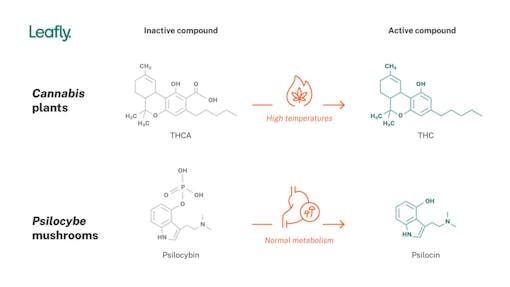
In cannabis, “THC content” refers to the total potential amount of THC, assuming all THCA is converted into THC. Likewise, the “psilocybin content” of mushrooms is the total psilocin content: How much psilocin the body will be exposed to after psilocybin is metabolized into psilocin.
In 2019, the FDA classified psilocybin therapy as a breakthrough therapy for two clinical trials investigating the effects of it on severe depression and major depressive disorder. This designation was intended to “expedite the development and review of drugs that are intended to treat a serious condition.”
Pharmacologically, evidence suggests that psilocybin has a very low toxicity and is well-tolerated, though more up-to-date research is needed. While psilocybin is still classified as a Schedule I substance under the Controlled Substances Act, federal attitudes appear to be changing.
What is the history of magic mushrooms?
The use of magic mushrooms in rituals and ceremonies has been woven throughout history. Evidence reaching back to 10,000 BCE in the form of mushroom art on rocks in Kimberley, Australia, points to psilocybin use. There’s also proof littered throughout literature across the ages that diverse global cultures have dabbled in shrooms.
The Teonanácatl, or “God mushrooms,” of the Aztecs were immortalized in text by the Spanish in the 16th century. The mythical substance Soma, mentioned in the ancient Hindu text the Rig Veda, was argued to be derived from magic mushrooms.
For ethnomycologist Terence McKenna, the consumption of magic mushrooms irrevocably influenced the trajectory of human evolution (aka his stoned ape theory), contributing to advances in language, culture, religion, and even hunting, a belief echoed by ethnomycologist R. Gordon Wasson.
Wasson’s writing on magic mushrooms saw awareness of the fungi spread to psychedelic chemists such as Albert Hofmann. Hofmann then launched into research to isolate the active compound in mushrooms and uncover its uses.
Other leading figures in the psychedelic movement founded the famous, and controversial, Harvard Psilocybin Project in the early 1960s, notably Timothy Leary and Ram Dass. The project investigated and documented the effects of psychedelics on Harvard graduate students.
Research into the therapeutic applications of magic mushrooms essentially ground to a halt in 1970 following the introduction of the Controlled Substances Act in the US. This trend is being reversed today as researchers lean back into psilocybin research.
How does psilocybin make you feel?
Shrooms are known for their profound effects on consciousness and perception. Taking a moderate dose, the experience usually lasts between 4-6 six hours, with the peak occurring 2-3 hours after consumption. Taking a larger dose will increase the length and intensity of the trip.
Psilocybin can invoke a wildly diverse range of responses in consumers. Those who trip on shrooms commonly report changes in perception and time, including dream-like feelings, illusions, hallucinations, and synesthesia, or a mixing of the senses, such as sounds triggering color and other visuals.
Consumers often report altered sensory experiences such as flowing patterns or fractal images, a sense of time being drawn out, and personal insights that feel deeply meaningful. These trips can be extremely positive experiences but can also be frightening and disorientating.
Cognitive function can also be affected, causing divergent thinking—spontaneous, free-flowing, non-linear thinking—unlikely word associations, enhanced creativity, and an emphasis on the experience and meaning of music. Mood swings often occur on top of these: Individuals may experience a range of intense feelings, spanning from bliss and elation to anxiety.
A consumer’s mindset and the context in which they take mushrooms will strongly influence the direction a trip takes—this is known as “set and setting.”
For many people, mystical experiences are one of the most defining or memorable features of a shroom trip. Mystical experiences are defined by feelings of unity or interconnectedness with the surrounding world, peace, joy, a sense that time and space have been transcended, and the belief that the experience has provided insight about the nature of reality. Often deeply meaningful, these encounters have the ability to initiate profoundly positive, enduring changes in a person’s life.
It’s important to note that the consumer’s mindset and the context in which they take the mushrooms will strongly influence the direction a trip takes—this is known as “set and setting.” Why a consumer takes psilocybin, or what they hope to achieve—intention—is equally important.
Dosage also plays a role in how a trip turns out. Low doses usually result in more mild effects, like drowsiness and intensification of the pre-existing mood. These effects start to ramp up as the dose increases: Medium doses can lead to a controllable altered state of consciousness, while higher doses can send the consumer into a strong psychedelic experience.
How does psilocybin work on the brain?
Mushrooms are consumed orally and the liver converts psilocybin into psilocin. Psilocin then binds to a subset of serotonin receptors in the brain. Psilocin activates pathways that ultimately cause the brain to communicate in non-ordinary ways, and decrease activity in the Default Mode Network (DMN), said Tyler.
The default mode network is not a physical part of the brain, but a system of connected regions that plays a role in introspective activities. Daydreaming, thinking about oneself or others, or ruminating on the past or future are all mental processes overseen by the DMN.
By inhibiting the DMN, psychedelics increase integration across all of the brain, allowing more fluid forms of thinking to overcome entrenched, repetitive thought patterns. Experts have theorized that the inhibition of the DMN dissolves ego boundaries, reducing the feeling that the “self” is distinct from others and the surrounding environment. New sensory inputs, perceptions, and experiences can then enter the individual’s awareness.
“When the DMN is turned down, an individual’s sense of self begins to dissolve, often freeing people—at least temporarily—from negative thought loops,” explained Tyler.
Psilocin also increases both neuroplasticity and neurogenesis. Neurogenesis refers to the creation of new neurons and connections in the hippocampus of the brain, and neuroplasticity is the process of how the brain changes and is rewired in response to new stimuli and experiences.
Neurogenesis is a fundamental aspect of neuroplasticity, with new brain cells created when we learn something new or engage in activities that stimulate our brain. In healthy brains, neurogenesis occurs throughout life, but can be impaired by factors such as a poor diet, alcohol, insufficient sleep, stress and mental illness.
Many psychedelic drugs increase both neuroplasticity and neurogenesis. Research has shown that psychedelics increase the growth and density of neurons in the brain and activate new neural pathways safely, a feat few compounds are capable of achieving.
Enhanced neurogenesis and neuroplasticity have been linked to improved mental health. Experts have pointed out that psychedelics may be ideally positioned to treat psychiatric disorders by stimulating connectivity and integration across the brain, and boosting neurogenesis.
How do magic mushrooms stack up against other psychedelics?
Psilocybin is recognized as a classic psychedelic along with DMT, mescaline, and LSD. Consumers of these compounds often report some overlapping experiences, particularly between LSD and mushrooms.
Both LSD and shroom trips can be characterized by:
- Distorted perceptions of time
- Hallucinations
- Fluidity—seeing stationary objects move or melt
- Altered senses of smell, taste, or touch
- Feelings of unity with others and the surrounding world
- Refreshed perspective on one’s life or problems
However, the two drugs are also distinctive. Consumers often comment that mushrooms offer a shorter, more chilled-out trip than LSD. Mushrooms are also believed to provide more of a body high, while acid is perceived to be more cerebral. Mushroom consumers can sometimes experience nausea.
In one survey comparing experiences between LSD, shrooms, psilocybin, and DMT, no significant differences were found between consumers who had taken mushrooms and LSD. Compared to mushrooms, ayahuasca was seen to focus more on self-healing and leave a more enduring positive effect on quality of life. DMT was found to be more likely to elicit a mystical experience, bringing about an encounter with some otherworldly entity.
What is psilocybin used for today?
Similar to shroom consumers of times past, psilocybin is used recreationally nowadays for enjoyment, to spark spiritual journeys, and to uncover insights about the nature of existence and consciousness.
Researchers are also picking up where Leary, Hofmann, and other psychedelic trailblazers left off in the late sixties by further uncovering the therapeutic uses of this remarkable molecule.
“Psilocybin is currently being explored in clinical trials as a potential treatment for a host of neuropsychiatric disorders,” said Tyler. “Synthetic psilocybin has been the subject of a number of clinical trials and research studies to explore how it works in the brain, and its potential uses, in conjunction with psychotherapy, to treat neuropsychiatric disorders.”
A number of clinical trials have already been completed, reporting that psilocybin-assisted therapy offers benefits for:
The FDA recently designated psilocybin as a breakthrough therapy for treatment-resistant depression. Breakthrough status expedites drugs that are believed to display advantages over existing medical treatments.
Gauging by this fast-tracking research, psilocybin looks set to play a role in shaking up and transforming the mental health landscape in the years to come.
By providing us with your email address, you agree to Leafly's Terms of Service and Privacy Policy.
